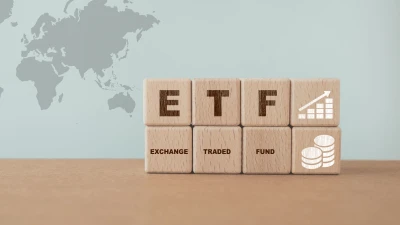Biggest year for ETF launches fails to stem FUM decline



BetaShares’ end of year review revealed that industry funds under management (FUM) started at $137 billion and ended 2022 at $133.7 billion, a decrease of $3.2 billion.
The change in total industry size contrasted results from 2021, which experienced an all-time record growth of $42 billion.
Ilan Israelstam, BetaShares chief commercial officer, commented: “I did not predict the extent of market declines which ultimately led to a small decline in the value of the industry.
“In terms of 2023, we believe that market conditions will continue to act as a hindrance to industry growth but expect net inflows to remain consistently positive and ultimately that the industry will return to a growth footing,” said Israelstam.
He forecast the total industry FUM at the end of 2023 would exceed $150 billion in assets.
2022 broke records with the 52 new ETFs launched on Australian exchanges, topping last year’s results which saw 33 new launches.
Israelstam noted that these launches were “one of the few bright spots in a very hard year for the broader asset management industry”.
He added: “We would expect 2023 to again bring a number of new products, albeit not another record-breaking year given the breadth of product range currently available on ASX/CBOE.”
The industry recorded net inflows of $13.5 billion, alongside unlisted funds which sustained net outflows of -$26.8 billion. This signified 2022 as the worst year on record for Australian managed funds.
The market welcomed a 6% growth in the number of Australian ETF investors, currently sitting at 1.9 million Australians. Paralleling this increase, ASX ETF trading value reached an all-time high of $117 billion, breaking 2021’s record of $95 billion.
ETFs received higher cumulative flows ($71 billion) than unlisted funds ($3 billion) in four of the last five years, excluding 2021.
Despite these positive net flows, the entire industry still experienced a 2% fall in value. This was largely due to falling share and bond markets causing declines in asset value.
The review additionally listed the top 10 largest ETF products of 2022:
|
1. Vanguard Australian Shares Index ETF |
$11.8 billion |
|
2. Magellan Global Fund (Open Class) (Managed Fund) |
$7.5 billion |
|
3. Vanguard MSCI Index International Shares ETF |
$5 billion |
|
4. iShares S&P 500 ETF |
$4.7 billion |
|
5. SPDR S&P/ASX 200 |
$4.6 billion |
|
6. iShares Core S&P/ASX 200 ETF |
$3.5 billion |
| 7. VanEck Vectors MSCI World Ex-Australia Quality ETF | $2.9 billion |
|
8. Vanguard US Total Market Shares Index ETF |
$2.8 billion |
|
9. BetaShares Australian High Interest Cash ETF |
$2.7 billion |
| 20. Vanguard Australian Shares High Yield ETF | $2.6 billion |
Source: BetaShares, 2022
Recommended for you
GQG Partners has marked its fifth consecutive month of outflows as its AI concerns lead to fund underperformance but overall funds under management increased to US$166.1 billion.
Apostle Funds Management is actively pursuing further partnerships in Asia and Europe but finding a suitable manager is a “needle in a haystack”.
Nuveen has made its private real estate strategy available to Australian wholesale investors, democratising access to a typically institutional asset class.
VanEck is expanding its fixed income range with a new ETF this week to complement its existing subordinated debt strategy which has received $1 billion in inflows this year.












